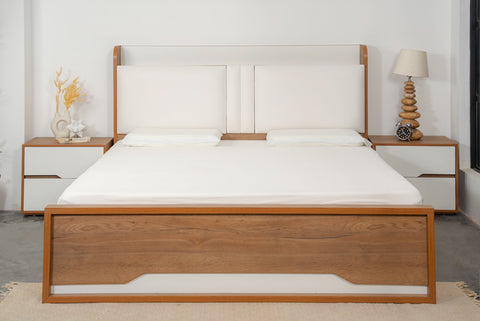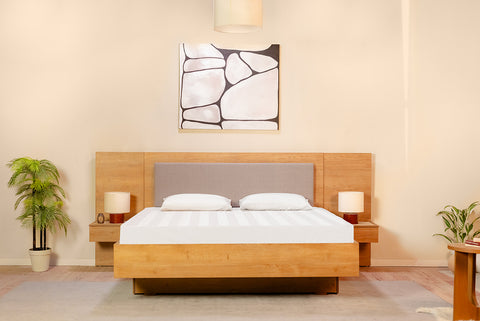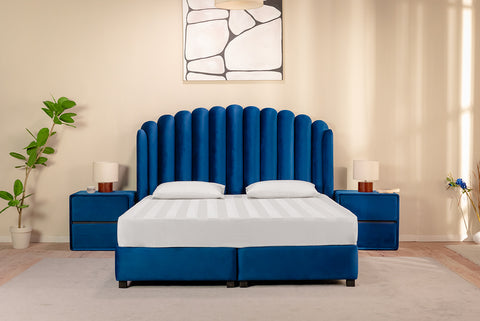How to Choose Furniture That Makes a Small Home Feel Spacious and Balanced
Living in a small home often comes with its own set of challenges. One of the most common concerns is how to furnish it without making the space feel crowded. The truth is that the right home furniture choices can change the way a home feels. With careful planning, a small living area can appear open, organized, and inviting. The goal is not to add less furniture but to choose pieces that enhance the sense of space while serving daily needs.
This article explores practical strategies for selecting furniture that helps small homes feel larger, balanced, and comfortable. Each section highlights simple yet effective steps you can take to maximize your available space while maintaining a refined and welcoming atmosphere.
Start with the Right Scale
The scale of furniture has a direct impact on how large or small a room appears. Oversized pieces can dominate a small room and make it feel tight, while furniture that matches the proportions of the room creates harmony.
For instance, if you have a compact living area, a sleek two-seater sofa will fit better than a bulky sectional. Choosing armchairs with slim frames instead of wide, padded designs can also free up visual space. Similarly, in bedrooms, low-profile bed frames and side tables with slender legs often look more fitting.

The key is to strike a balance. Avoid furniture that is too small, as it may make the room look unfinished. Instead, opt for pieces that are modest in size but thoughtfully designed to fit the room’s proportions.
Prioritize Multi-Functional Furniture
In small homes, every piece of furniture needs to work harder. Multi-functional designs help you achieve this balance. A sofa bed can serve as a comfortable seat during the day and transform into a sleeping area at night. An ottoman with hidden storage can double as a seat, a coffee table, or a place to store blankets.
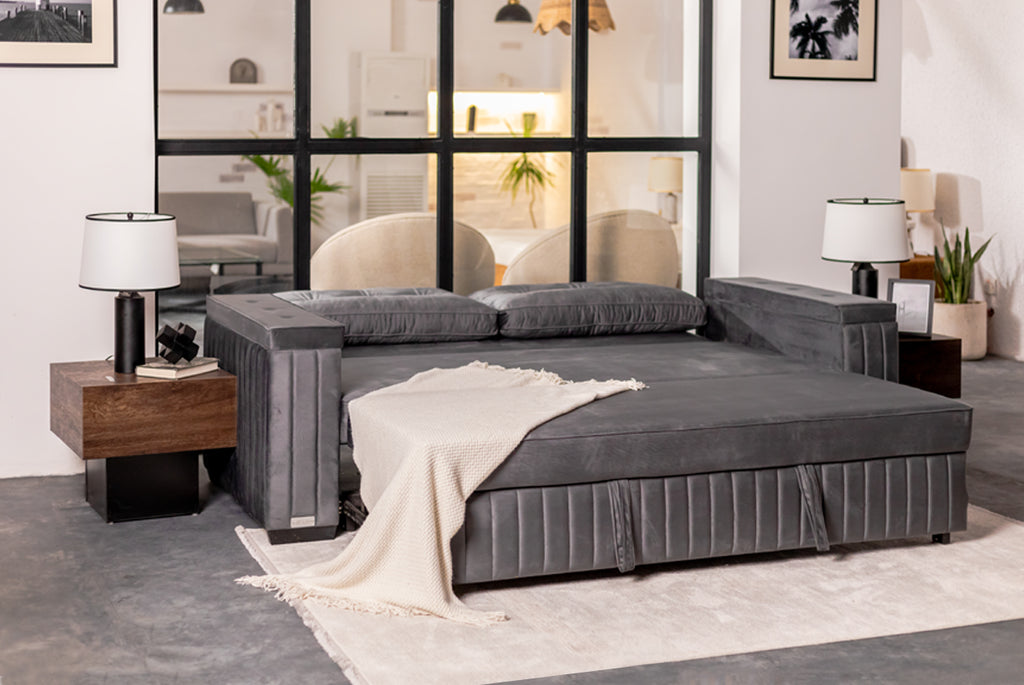
When choosing multi-functional pieces, consider your lifestyle. Ask yourself what activities take place most often in the room and select furniture that adapts to those needs. This approach reduces clutter and ensures that every item has a purpose.
Choose Light Colors and Streamlined Designs
The color and style of furniture influence how spacious a room feels. Lighter shades tend to reflect more light, giving the room an airy appearance. Whites, creams, soft grays, and light wood finishes often work well in small spaces.
Streamlined designs with clean lines are also helpful. Furniture with heavy ornamentation or dark finishes can weigh a room down, while simpler designs create an open look. For example, a glass-top coffee table or a side table with a light wooden finish blends into the room without drawing too much attention.
Neutral colors can also provide flexibility. They allow you to experiment with accents such as cushions, rugs, or artwork without overwhelming the space.
Make Use of Vertical Space
When floor space is limited, vertical storage solutions become essential. Tall, slim storage units and dressers draw the eye upward, making the room appear taller. They also help you store more without taking up much floor area.
For example, a dresser with multiple drawers offers ample storage for clothing while keeping surfaces tidy. In living areas, tall shelving units can hold books, décor, and essentials in one place. This approach reduces clutter at eye level and frees up space for movement.
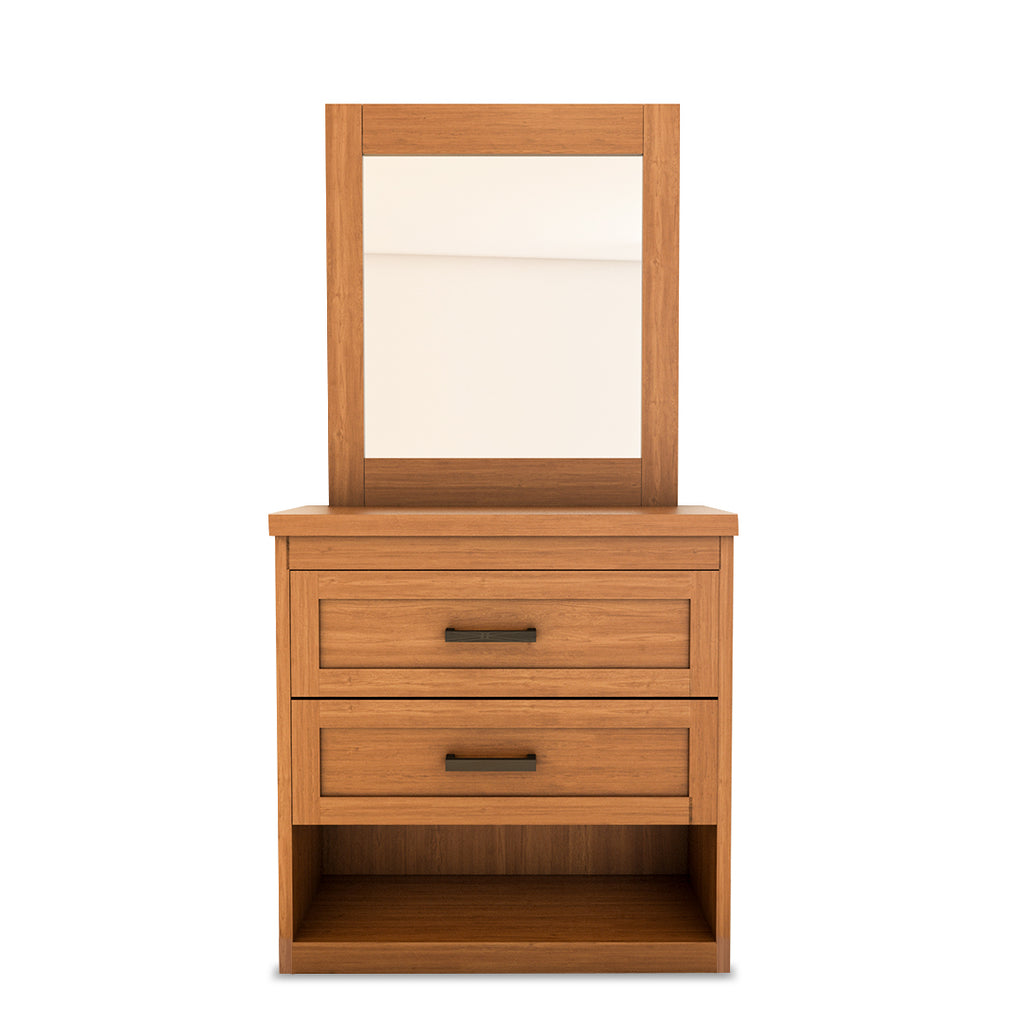
Even in smaller rooms, placing shelves higher on the wall can create extra storage while leaving the floor clear. The result is a cleaner, more open environment.
Incorporate Glass, Mirrors, and Open Frames
Reflective and transparent surfaces are excellent tools for creating the illusion of space. A mirror placed strategically can make a small bedroom or living room appear larger. Mirrors reflect light and expand the visual dimensions of the room.
Glass furniture also has a similar effect. A glass-top dining table, for example, feels lighter than a solid wooden table. Open-frame designs such as shelving units with exposed sides also allow the eye to travel through, reducing visual heaviness.
These elements do not add physical space, but they create a sense of openness that can make small homes feel less confined.
Keep the Layout Flexible
Flexibility in furniture layout is another important factor in small homes. Rooms may need to serve more than one function. For this reason, lightweight or modular furniture that can be rearranged easily works best.
For example, stools or poufs can be moved around as extra seating or tucked away when not needed. A foldable dining table can expand when you have guests and fold back to save space. This adaptability ensures that your home can adjust to your daily routine while remaining organized. Avoid blocking natural light with furniture placement. Keeping pathways clear and arranging seating around focal points like windows can make a space feel larger.
Invest in Quality over Quantity
When space is limited, it is better to own fewer pieces of high-quality furniture than many small items that clutter the room. Well-designed furniture not only lasts longer but also provides better functionality.
A sturdy side table, for example, can serve as a reliable companion for years, while a dresser with smooth finishes and strong construction ensures durability. Investing in timeless designs helps you avoid the need for frequent replacements and allows your small home to remain uncluttered.
Choosing quality over quantity also ensures that every piece in your home contributes meaningfully to both style and function.
Conclusion
Creating the feeling of space in a small home is not about having less furniture. It is about making thoughtful choices. By focusing on scale, multi-functionality, light designs, vertical storage, reflective surfaces, flexible layouts, and quality investments, you can transform a compact home into a space that feels open and balanced.
At MoltyHome, each furniture piece is designed with both elegance and practicality in mind. Collections such as sofa beds, ottomans with storage, and dressers provide smart solutions for small spaces while maintaining a refined style. These options are crafted to fit seamlessly into homes where every square foot counts.
With the right choices, your small home can feel spacious, welcoming, and beautifully arranged.
FAQs
What type of furniture works best in a small living room?
Compact sofas, nesting tables, and ottomans with storage are ideal because they save space and serve multiple functions.
How can I make a small bedroom look bigger with furniture?
Choose low-profile beds, slim side tables, and tall dressers that use vertical space without overwhelming the floor area.
Do mirrors really make a room appear larger?
Yes. Mirrors reflect light and create the illusion of depth, making a small room look more open.
Should I use dark-colored furniture in a small home?
Light colors are usually better as they make a room feel more open. However, a few dark accent pieces can add contrast if used carefully.
How do I avoid overcrowding my space with furniture?
Prioritize essential items, select multi-functional pieces, and leave enough room for movement. Avoid adding too many small pieces that clutter the space.

